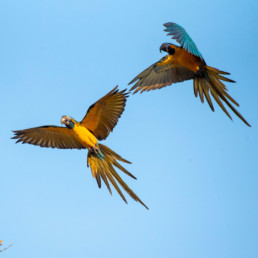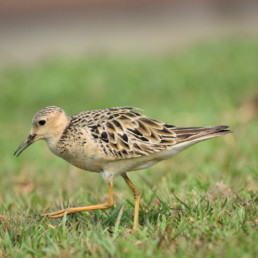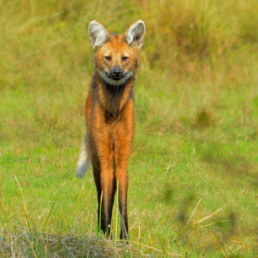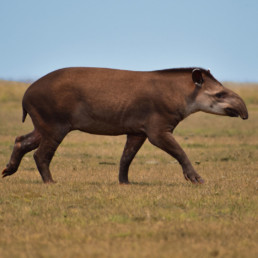Location
The Llanos de Moxos, also known as the Beni savanna, is a tropical savanna in the lowlands of northern Bolivia. This region is part of the larger Amazon Basin and is characterized by a mosaic of grasslands, wetlands, and gallery forests.
126,100square kilometers
(48,700 sq mi)
Conservation Concerns
The Beni Savanna is known for its rich biodiversity, hosting a variety of plant and animal species. The region faces threats from deforestation, agricultural expansion, and other human activities. Conservation efforts aim to balance the needs of local communities with the preservation of the region’s biodiversity.
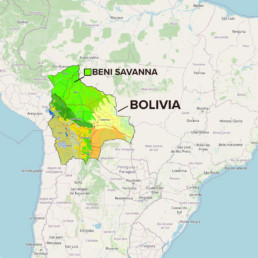
Extending over 126,100 sq km, this complex ecosystem of grasslands, marshes, forest islands and gallery forest supports a diverse and distinctive flora and fauna. The Critically Endangered Blue-throated Macaw is found in only one place on Earth: the Beni Savanna in northern Bolivia.
2009 survey found 230 bird species, including many waterbirds and several species of North American migrants. As many as 1,450 Buff-breasted Sandpipers (a Near Threatened species) were counted there recently, making this the most important stop-over site in Bolivia. Of its 146 mammal species (see mammal video, below), several are found nowhere else in Amazonia, including the Pampas Deer, the Near Threatened Maned Wolf, and the Endangered Beni Titi Monkey. Also present are the Southern Tamandua, Black Howler Monkey, Capybara, Jaguar and high concentrations of Giant Anteater.
In an effort to safeguard and augment the population of the Critically Endangered Blue-throated Macaw, as well as other crucial species within the Beni Savanna ecosystem, the International Conservation Foundation (ICF) supports our esteemed field partner, Asociación Armonía. This strategic alliance is focused on fortifying the conservation efforts within the Barba Azul Nature Reserve, a pivotal stronghold for the preservation of biodiversity in this ecologically significant region. Armonía is implementing comprehensive measures to ensure the sustained protection of not only the Blue-throated Macaw but also the entire array of species that call the Beni Savanna home.

